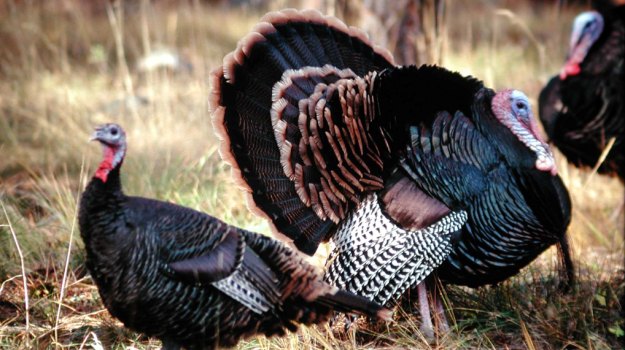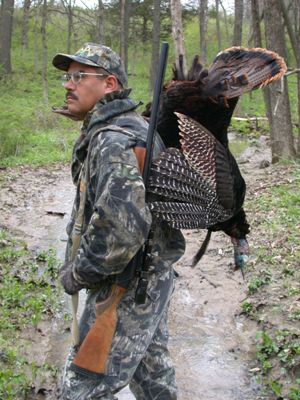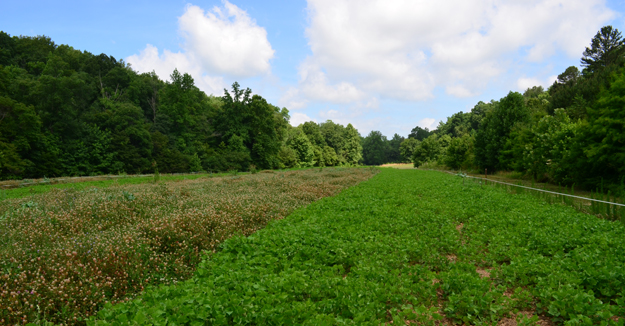
Editor’s Note: Steve Coon works with Drury Outdoors (Mark and Terry Drury) and appeared on the Drurys’ TV show, “Dream Season the Journey.”
Turkey hunters define a gobbler that stands in one place, gobbles and struts but won’t come in to the call as a hung-up gobbler. When a turkey hangs-up, it’s because he knows that when he gobbles, the hen is supposed to come to him. If he can’t get that hen to come to him, he becomes suspicious there’s danger where he hears that hen calling to him. Primarily, you'll encounter hung-up gobblers on public-hunting lands where the turkey has encountered plenty of hunting pressure, and/or on private lands where several hunters have tried to take the same turkey. In most places where I've hunted, you know for certain you're hunting a hung-up gobbler if the people you’re hunting with have given that turkey a name. Many times a tom earns his name after several people have hunted him unsuccessfully.
When I know I'll be hunting a hung-up gobbler, or I’m going to guide someone to a gobbler that tends to hang-up, I’ll assume that both of us hunting will be required to take him. One person will be the shooter. The other person will be the caller. If I'm guiding someone, I’ll put the shooter out in front of me, and I’ll get 20 to 30 yards behind the shooter.
 A classic example of this was a hunt I went on in northern Missouri where we hunted on an old logging road. When this gobbler pitched down, he'd walk down that logging road. He had a little place that he'd set-up as a strut zone and met his hens. Although this hunt should have been easy because we knew where the turkey roosted, where he flew down and where he strutted, we set-up to try to take this turkey two or three different times. He just wouldn’t cooperate. When we started calling, he wouldn’t follow his routine. On this particular morning, I sat my hunter where I thought the turkey would appear, got behind the hunter and started float calling. I define float calling as a tactic that the caller uses to more realistically sound like a live hen. I use several different MAD calls when I'm float calling to sound like a flock of hens that have heard the gobbler gobble but aren’t interested in going to him. So, I’ll give some soft clucks and purrs to sound like a flock of feeding hens. Occasionally, I’ll scratch in the leaves with my foot or my hand. I’ll use various types of calls from different callers to sound like different hens in the flock. If you’ve ever heard a flock of hens moving through the woods, you know what they sound like.
A classic example of this was a hunt I went on in northern Missouri where we hunted on an old logging road. When this gobbler pitched down, he'd walk down that logging road. He had a little place that he'd set-up as a strut zone and met his hens. Although this hunt should have been easy because we knew where the turkey roosted, where he flew down and where he strutted, we set-up to try to take this turkey two or three different times. He just wouldn’t cooperate. When we started calling, he wouldn’t follow his routine. On this particular morning, I sat my hunter where I thought the turkey would appear, got behind the hunter and started float calling. I define float calling as a tactic that the caller uses to more realistically sound like a live hen. I use several different MAD calls when I'm float calling to sound like a flock of hens that have heard the gobbler gobble but aren’t interested in going to him. So, I’ll give some soft clucks and purrs to sound like a flock of feeding hens. Occasionally, I’ll scratch in the leaves with my foot or my hand. I’ll use various types of calls from different callers to sound like different hens in the flock. If you’ve ever heard a flock of hens moving through the woods, you know what they sound like.
Here’s the real secret to successful float calling. Besides using several different calls and scratching in the leaves, first of all make sure the gobbler can’t see you. Next, you want the gobbler to think this flock of hens isn’t interested in meeting and mating with him. Actually, they’re planning to walk away from him. To present this picture to the gobbler, move back and forth behind the hunter, and steadily move away from the hunter as you call. On this particular day, when the turkey flew off the limb and started gobbling, when he heard that flock of hens (me) moving away from him, he decided to try and catch up to them to see if he couldn’t find a date. Knowing the gobbler would have to come right by my hunter, my hunter held his shot until the gobbler was 15 yards from where he was sitting. Then he squeezed the trigger and put the smack-down on that ole hung-up gobbler. When you have a hung-up turkey, you’ll have a much-better chance of taking that bird with two people. You need to have the caller far enough behind the shooter that the caller can move, sound like more than one hen and drag that old gobbler right on top of the hunter by making the gobbler think the hens are walking away from him.



























